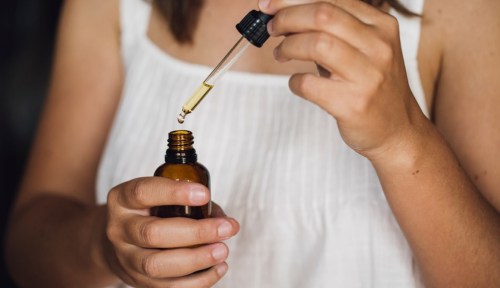Our Everyday Gear Can Now Perform Medical Tests from Home
Learn about the rise of wearable health technology packaged in everyday items, and how it might change the patient-physician relationship.


Our Everyday Gear Can Now Perform Medical Tests from Home
Just about anything worn on the body is getting a “smart,” health-tracking upgrade, which stands to transform the patient-physician relationship.
Smartwatches andsmart ringsthat track our fitness and sleep stats have been available for years. But in 2024, a growing variety of everyday products worn on the body (think: headphones and tampons) will function as packaging for wearable health technology that can measure all kinds of biomarkers. And as these products make certain components of health information more readily accessible and easier to grasp, the relationship between patient and physician stands to evolve. “Digital devices can help patients take active part in their own health or disease management,” says Bertalan Meskó, PhD,director of The Medical Futurist Institute, which analyzes the role of digital technologies in shaping the future of health care. “They can finally become members of their own medical team.”
Research supports that a number of patients are here for that shift: According to a 2023 study from Yale University, more thana quarter of Americansnow use a wearable health-tracking device. And the market is only growing: The medical wearables market had an estimated value of $31.06 billion globally in 2023, and isprojected to reach $63.68 billionby 2028, according to a July report conducted by market research firm Infogence Global Research. “We are receiving emails almost every day from all around the world asking us, ‘Okay, how can I use the device and when will it be launched?’ even though we didn't make any marketing yet,” saysSavas Komban, CEO and co-founder ofSmartlens, which is developing glaucoma-detecting contact lenses.
But what does this tech actually look like and how will it fit into your life?
Imagine you wake up in the morning and go into the bathroom. If you’re menstruating, you can get a whole host of information about your blood and vaginal microbiome. If you have a Tulipon(early access available via Indiegogo) orEmmmenstrual cup (now offering waitlist access), a connected app will tell you all about your flow level; Tulipon will also tell you about yourvaginal pH, and eventually Emm aims to give you a heads-up on early signs of diabetes, cholesterol, and gynecological diseases. You can use a Q-Pad(planning to launch early 2024) to collect your period blood so you don’t need to have a needle prick your skin to test blood for markers associated with thyroid health, blood sugar levels, or fertility hormones. You can mail in your NextGen Janesmart tampon (available to volunteers of its clinical studies) to identify gynecological conditions like endometriosis or fibroids, or your Dayetampon to check your vaginal microbiome for things like bacterial infections, potential fertility issues, and whether you’re showing signs of enteringperimenopause. (Starting in early 2024, the Daye tampon will also be able to identify sexually transmitted diseases like chlamydia and gonorrhea, and later, HPV).

You’re still in the bathroom, and it’s time to put on your contact lenses for the day. If you’ve been diagnosed with or told you’re at risk for glaucoma, you can put on your miLens fromSmartlens(on track for FDA approval in late 2024). This device measures your eye pressure—since high levels can damage the optic nerve, leading to glaucoma—by testing how much your cornea is pressing on the microfluid built into the lens. And, if all goes well, in a few years, the company’s smart glasses, called THERmic, will allow doctors to remotely program a personalized microdose of medication based on the miLens measurement, which the glasses will then administer to maintain youreye health.
Now, you’re ready to get dressed. Your
Prevayl SmartWearshirt or sports bra (launched in 2022, and since adopted by prominent clients including the UK Ministry of Defense) comes with a small sensor that captures nearly 1,000 data points per second, like your breathing rate and body temperature. In 2023, its clinical-grade electrocardiograms (ECGs) were independently validated against the hospital-grade standard for heart rate monitoring. On your feet, you slip on Milbotixsocks (going to market in early 2025), which will measure your stress and anxiety levels by tracking your heart rate, sweat levels, and movements. And if the research ofAldo Faisal, PhD,professor of artificial intelligence (AI) and neuroscience at Imperial College London, is successful, down the line you’ll be able toput on clothingwith sensors that can pick up on movement patterns that may be invisible to the naked eye but are indicative of certain neurological disorders likeFriedreich's ataxiaorDuchenne muscular dystrophy. This information may allow doctors to catch symptoms early and tailor treatments to match the progression of the disorder.










